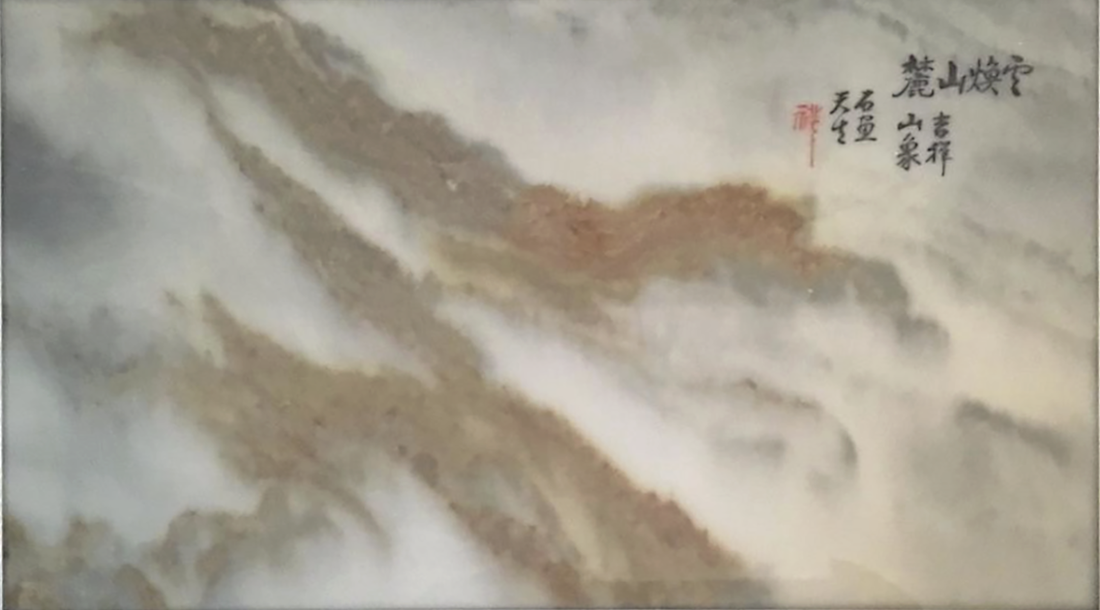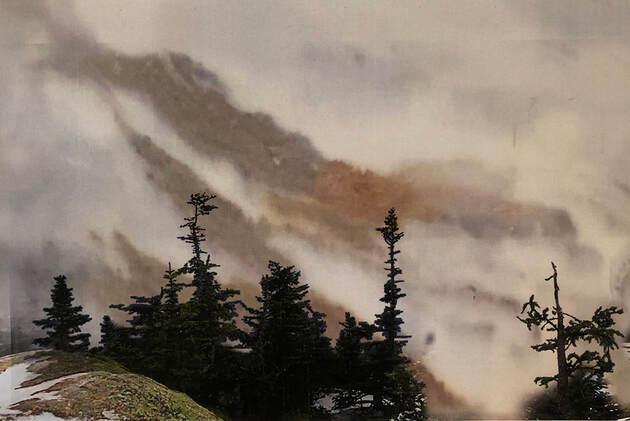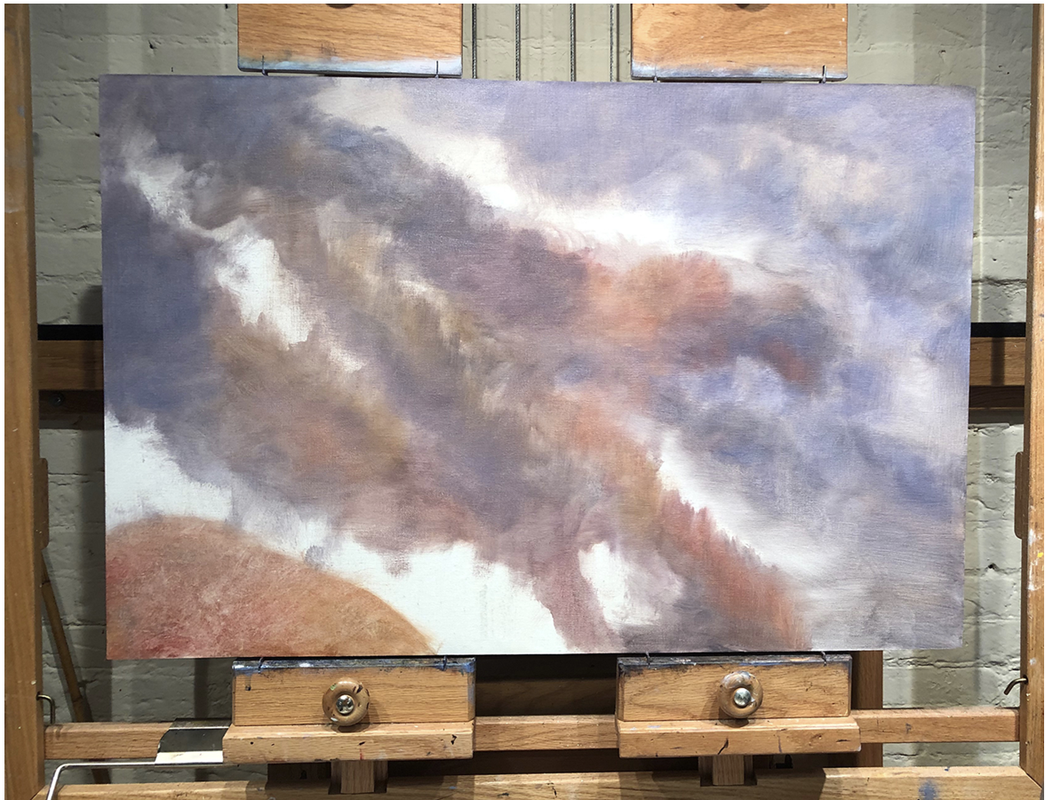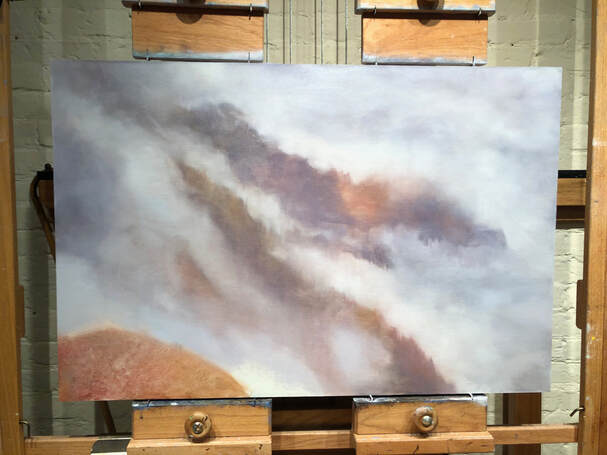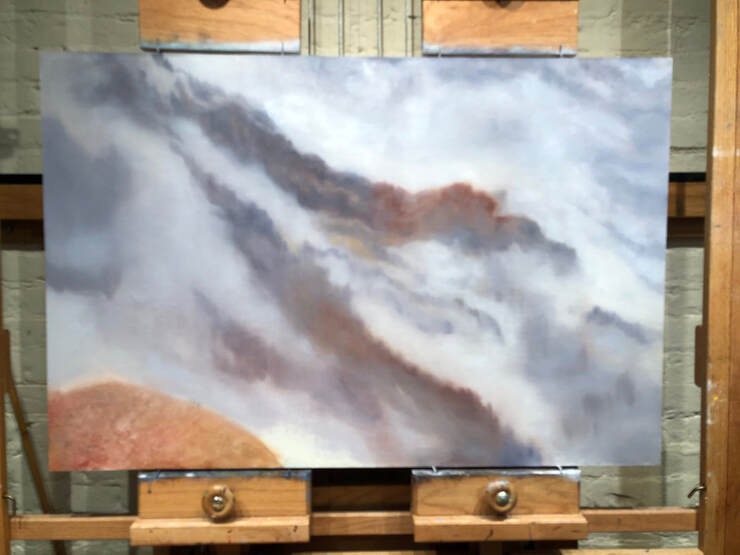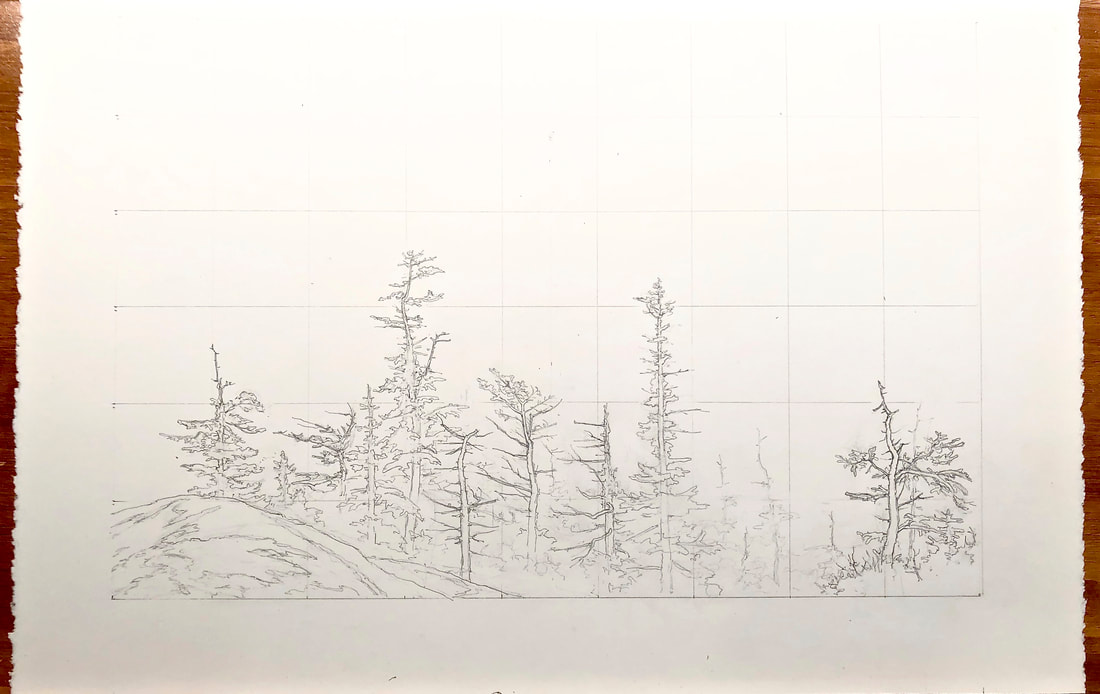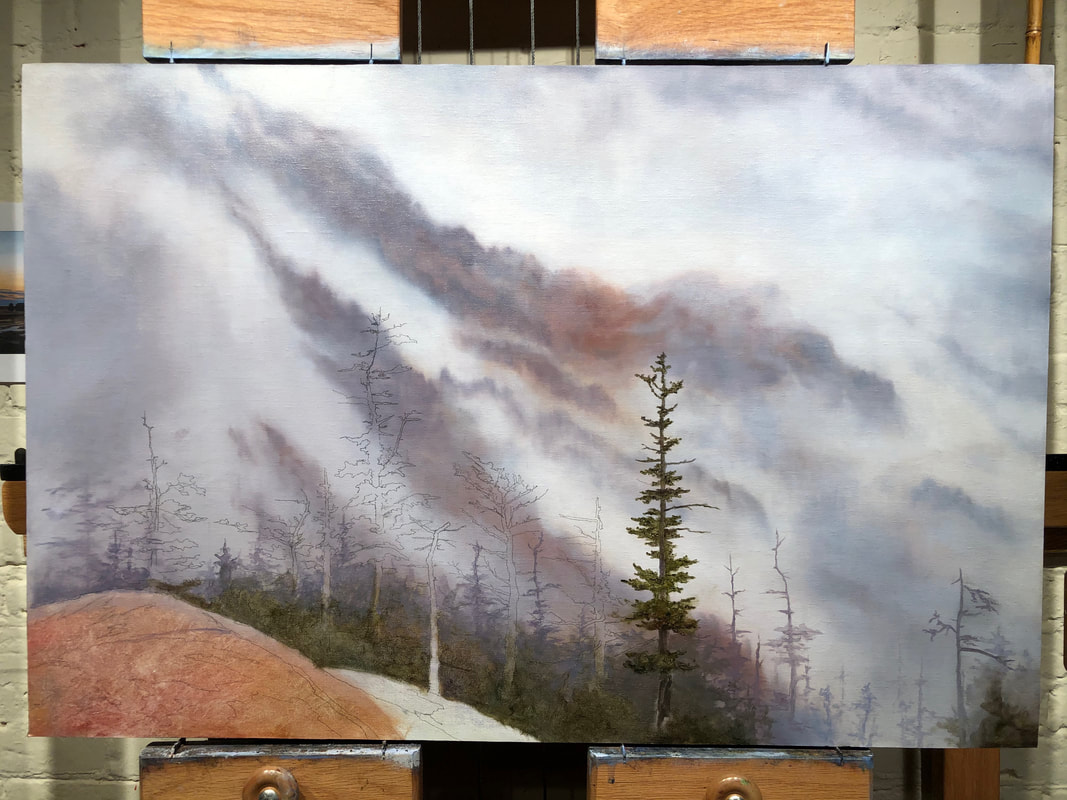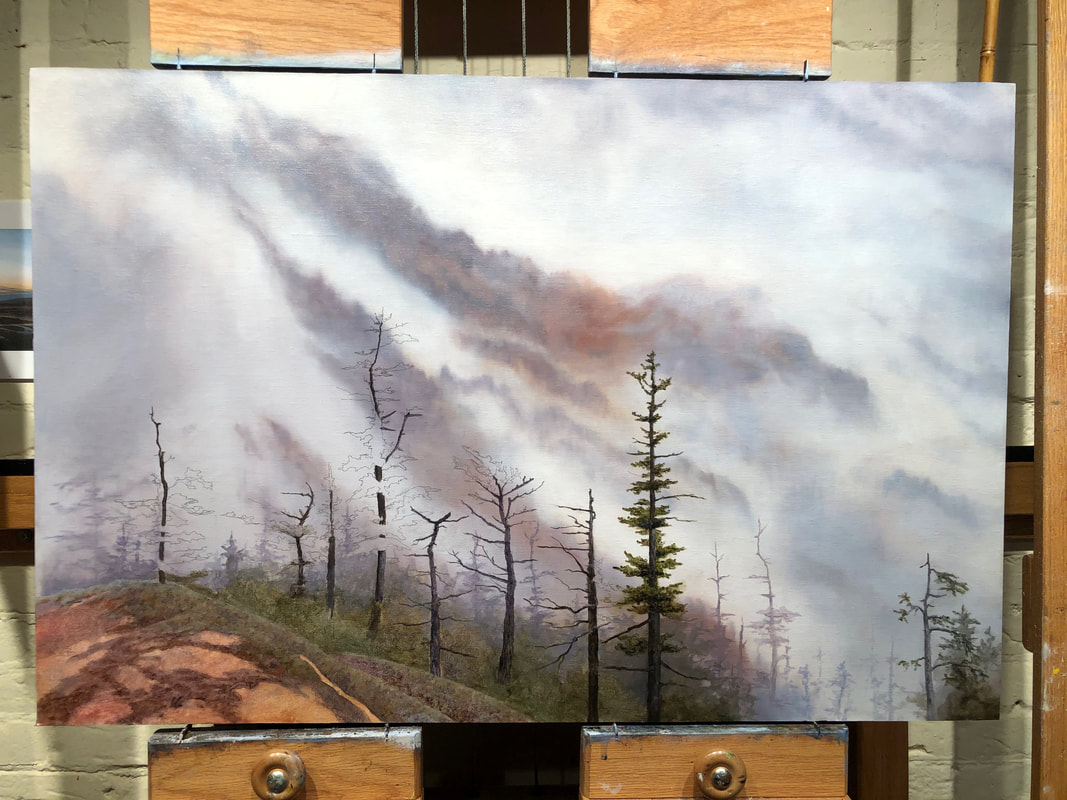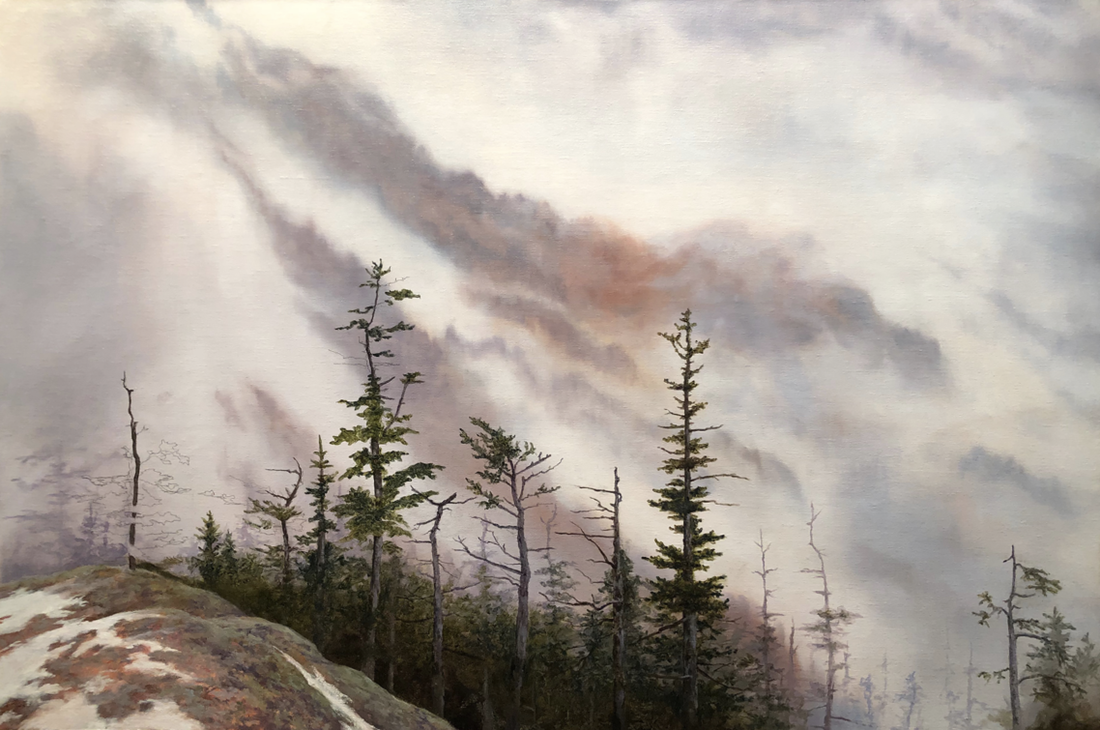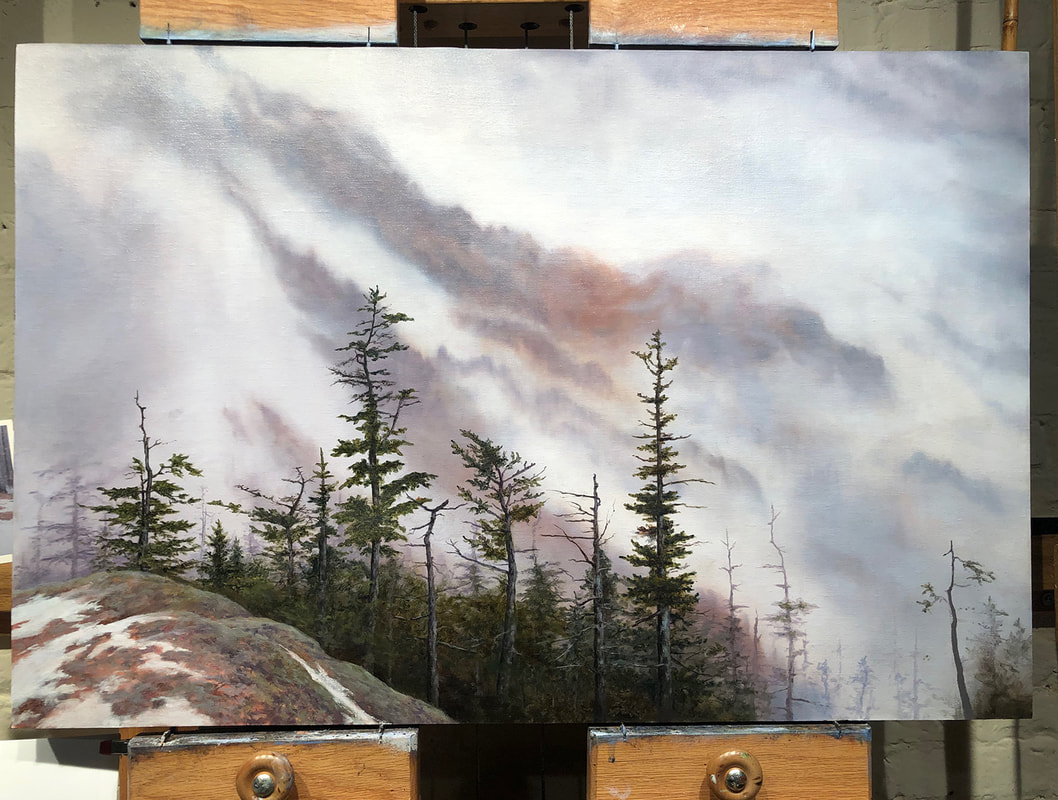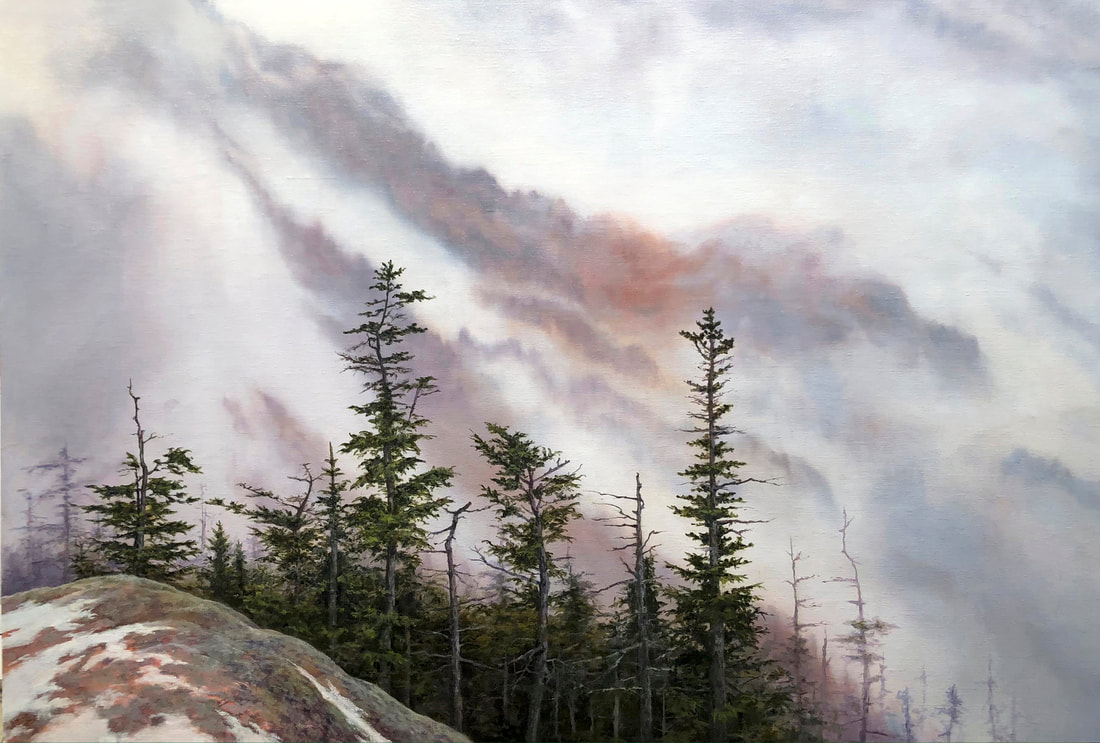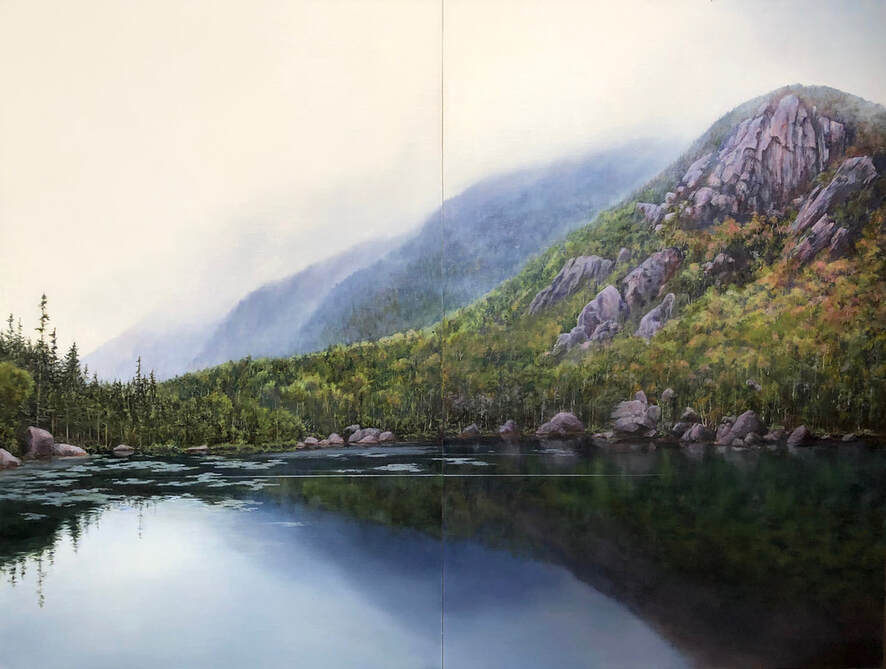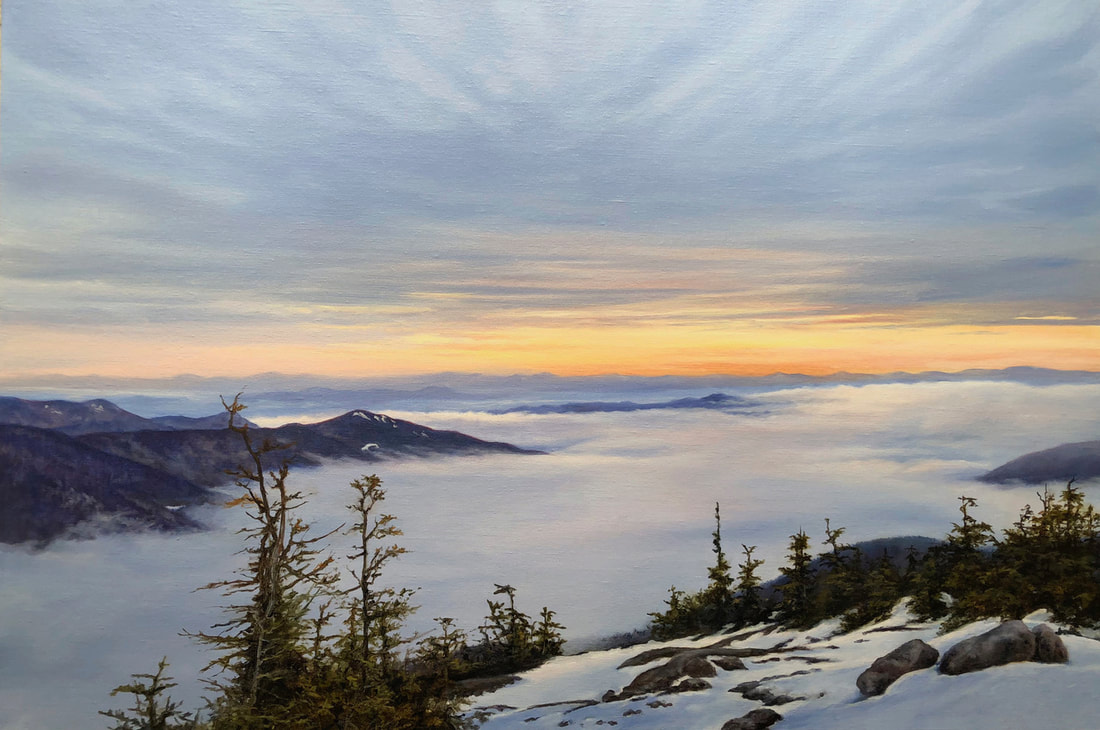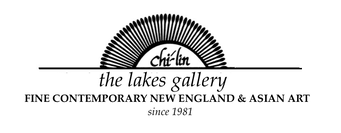MARY GRAHAM, "Stone Waves"
During a visit to China several years ago, I became intrigued and fascinated by Chinese “stone paintings" marble stones that have veins and intrusions that suggest mountains, clouds, rivers, forests, and other natural phenomena. Framed and hung on walls or incorporated into screens, tables, and other articles of furniture, these marbles have been collected and admired for centuries in China as objects of contemplation. Also known as “Dali Dreamstones” or “pierres du rêve”, they were appreciated for their resemblance to Chinese ink paintings, in conveying the true essence of nature. I found them mesmerizing, and
when I returned home, I did some research to learn more about them.
This gave birth to an idea for a painting.
These marble stones suggested to me the primal energy of the cosmos, the surge and roil of undifferentiated tissue that is constantly in a state of change, reshaping itself. As I continue to explore the meaning of
‘absence and presence’ in my work, I wanted to incorporate this with the specific particularity of a mountain landscape closer to home—the krummholz spruce found in the higher elevations
of the White Mountains here in New Hampshire.
A quote from the introduction to a book of poems, of the 4th century poet Hsieh Ling-yün,
expresses the essence of my aim for this painting:
"As with China's great landscape paintings, Hsieh's mountain landscapes enact
'non-being mirroring the whole,' rendering a world that is profoundly spiritual,
and at the same time, resolutely realistic, in its extensive descriptions.”
“The Mountain Poems of Hsieh Ling-yün", translated by David Hinton, p.xiv
And so, to begin…
I chose this Dali marble as inspiration and resource for the foundation of my painting:
when I returned home, I did some research to learn more about them.
This gave birth to an idea for a painting.
These marble stones suggested to me the primal energy of the cosmos, the surge and roil of undifferentiated tissue that is constantly in a state of change, reshaping itself. As I continue to explore the meaning of
‘absence and presence’ in my work, I wanted to incorporate this with the specific particularity of a mountain landscape closer to home—the krummholz spruce found in the higher elevations
of the White Mountains here in New Hampshire.
A quote from the introduction to a book of poems, of the 4th century poet Hsieh Ling-yün,
expresses the essence of my aim for this painting:
"As with China's great landscape paintings, Hsieh's mountain landscapes enact
'non-being mirroring the whole,' rendering a world that is profoundly spiritual,
and at the same time, resolutely realistic, in its extensive descriptions.”
“The Mountain Poems of Hsieh Ling-yün", translated by David Hinton, p.xiv
And so, to begin…
I chose this Dali marble as inspiration and resource for the foundation of my painting:
1.
In Photoshop, using the photo of the marble stone as backdrop, I played with various compositions of spruce trees and rocks, until I had a design I was excited about. This might change in time,
but it gave me something of a road map to proceed.
3.
Clouds and mist began to envelop the stone mountains, as I introduced
opaque colors to the transparent color washes…
opaque colors to the transparent color washes…
4.
More refinement, and some color shifts…at this point, I felt I had a good foundation,
and I left it to dry thoroughly, before introducing the drawing.
and I left it to dry thoroughly, before introducing the drawing.
5.
Using field sketches, and photos of spruce, (and a live bonsai specimen of Colorado Blue Spruce I have in my garden, as model) I developed a drawing for the spruce and rock foreground. The drawing is 18 inches in width, about half the width of the finished painting. After I finish the drawing, I photograph it, project it using a digital projector, and draw it carefully and lightly in pencil onto the painted canvas.
6.
The furthest layers are painted first in transparent oils and allowed to dry, before the more
detailed painting of the individual spruce trees can begin. At this stage, I also decided
to enlarge the rock in the near foreground, to better balance the composition.
I also scumbled some transparent whites and blues into the distant mountains,
as I felt they were too prominent and competed with the trees
detailed painting of the individual spruce trees can begin. At this stage, I also decided
to enlarge the rock in the near foreground, to better balance the composition.
I also scumbled some transparent whites and blues into the distant mountains,
as I felt they were too prominent and competed with the trees
7.
8.
At this point, I am dissatisfied with the “bonsai” spruce in the lower right corner,
and I eliminate and obfuscate some of the heaviness in that area.
and I eliminate and obfuscate some of the heaviness in that area.
10.
Ultimately I decide that the painting is better off without the distraction of the trees
in the right hand corner, and I paint them out.
in the right hand corner, and I paint them out.
A bit more work on the particulars of the spruce branches,
adding highlights and definition to some, brings the painting to completion.
adding highlights and definition to some, brings the painting to completion.
“Stone Waves”
Oil on linen mounted on a cradled board, image 24" x 36," framed 25.25" x 37.25"
Oil on linen mounted on a cradled board, image 24" x 36," framed 25.25" x 37.25"
A Word About the Title:
Finding the right title for a painting is often a challenge, and seldom does a title suggest itself in the course of the work.
‘Stone Waves’ may seem to be simply a descriptive title, but it is also the name in translation of the early Qing Dynasty painter, Shih T’ao, whose paintings have influenced my own.
Finding the right title for a painting is often a challenge, and seldom does a title suggest itself in the course of the work.
‘Stone Waves’ may seem to be simply a descriptive title, but it is also the name in translation of the early Qing Dynasty painter, Shih T’ao, whose paintings have influenced my own.
"I’ve lived in the country long enough to know its wild joys: it feels like I’m a child back home in my old village again..
Leaving the city today, I put all that gritty dust behind me,
and facing mountains and valleys, feel them enter my eyes."
WANG AN-SHIH (1021 - 1086)
Translation by David Hinton
Leaving the city today, I put all that gritty dust behind me,
and facing mountains and valleys, feel them enter my eyes."
WANG AN-SHIH (1021 - 1086)
Translation by David Hinton
Similar Stories
"Mountain Lake in Spring" (Carter Notch)
Diptych, oil on linen mounted on cradled panels, image 30" x 40", framed 31.25 x 41.25"
Diptych, oil on linen mounted on cradled panels, image 30" x 40", framed 31.25 x 41.25"
"Late Winter Light from a Cliff Top"
Oil on linen mounted on cradled panel, image 20" x 30", framed 21.25 x 31.25"
Oil on linen mounted on cradled panel, image 20" x 30", framed 21.25 x 31.25"
